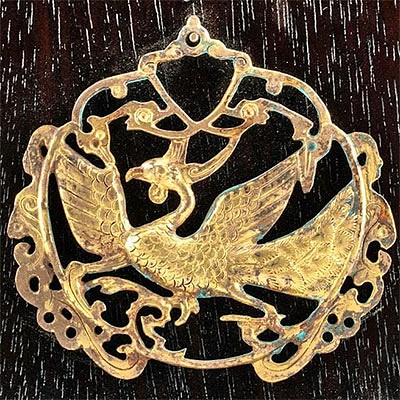9th C. Abbasid Vellum Manuscript Page w/ Kufic Script
Lot 53
About Seller
Artemis Fine Arts
686 S Taylor Ave, Ste 106
Louisville, CO 80027
United States
Selling antiquities, ancient and ethnographic art online since 1993, Artemis Gallery specializes in Classical Antiquities (Egyptian, Greek, Roman, Near Eastern), Asian, Pre-Columbian, African / Tribal / Oceanographic art. Our extensive inventory includes pottery, stone, metal, wood, glass and textil...Read more
Categories
Estimate:
$2,400 - $3,500
Absentee vs Live bid
Two ways to bid:
- Leave a max absentee bid and the platform will bid on your behalf up to your maximum bid during the live auction.
- Bid live during the auction and your bids will be submitted real-time to the auctioneer.
Bid Increments
| Price | Bid Increment |
|---|---|
| $0 | $25 |
| $300 | $50 |
| $1,000 | $100 |
| $2,000 | $250 |
| $5,000 | $500 |
| $10,000 | $1,000 |
| $20,000 | $2,500 |
| $50,000 | $5,000 |
| $100,000 | $10,000 |
| $200,000 | $20,000 |
About Auction
By Artemis Fine Arts
Jun 17, 2021
Set Reminder
2021-06-17 10:00:00
2021-06-17 10:00:00
America/New_York
Bidsquare
Bidsquare : Ancient & Ethnographic Art Through The Ages
https://www.bidsquare.com/auctions/artemis-gallery/ancient-ethnographic-art-through-the-ages-7094
Ancient art from Egypt, Greece, Italy and the Near East, as well as Asian, Fossils, Pre-Columbian, Native American, African / Tribal / Oceanic, Fine art, and much more! All categories, all price ranges... all legally acquired and guaranteed to be as described or your money back. Artemis Fine Arts info@artemisfinearts.com
Ancient art from Egypt, Greece, Italy and the Near East, as well as Asian, Fossils, Pre-Columbian, Native American, African / Tribal / Oceanic, Fine art, and much more! All categories, all price ranges... all legally acquired and guaranteed to be as described or your money back. Artemis Fine Arts info@artemisfinearts.com
- Lot Description
Near Eastern, Islamic, Abbasid Period, ca. 9th to 10th century CE. A lovely vellum manuscript page from an Islamic religious text, likely the Qur'an, featuring ten lines of Kufic text handwritten on each side. The calligraphy is penned in black and punctuated with crimson-hued ink, adding a hint of vibrancy to the text, as well as the beige-hued vellum. Considered the beginning of manuscript illumination and decoration, these punctuation marks were first added to Kufic Qurans in the 9th and 10th centuries to aid in the pronunciation and recitation of the text; thus, increasing its visual and auditory aesthetic. Reciting the Qur'an correctly is a highly regarded art in the Islamic faith and is called "tajwid", an Arabic term that literally translates to "beautification." Size: 7.25" W x 9.5" H (18.4 cm x 24.1 cm)
Characterized by its angularity, Kufic script became the standard script for Qur'anic production between the 8th and 10th centuries. The letters that are extended horizontally are part of a practice known as "mashq," which is used to create an aesthetic rhythm and harmony throughout the text. While this technique does affect the legibility of the text, manuscripts like this example were typically used as guides by reciters who had memorized the Qu'ran.
Provenance: private Washington, USA, collection, acquired before 2000
All items legal to buy/sell under U.S. Statute covering cultural patrimony Code 2600, CHAPTER 14, and are guaranteed to be as described or your money back.
A Certificate of Authenticity will accompany all winning bids.
We ship worldwide and handle all shipping in-house for your convenience.
#163045From larger codex. Expected staining and light wrinkling to vellum with some translucent areas and smudging to ink. A row of petite indentations along one side from binding. Otherwise, excellent with nice remaining pigments.Condition
- Shipping Info
-
All shipping is handled in-house for your convenience. Your invoice from Artemis Gallery will include shipping calculation instructions. If in doubt, please inquire BEFORE bidding for estimated shipping costs for individual items.
-
- Buyer's Premium



 EUR
EUR CAD
CAD AUD
AUD GBP
GBP MXN
MXN HKD
HKD CNY
CNY MYR
MYR SEK
SEK SGD
SGD CHF
CHF THB
THB












